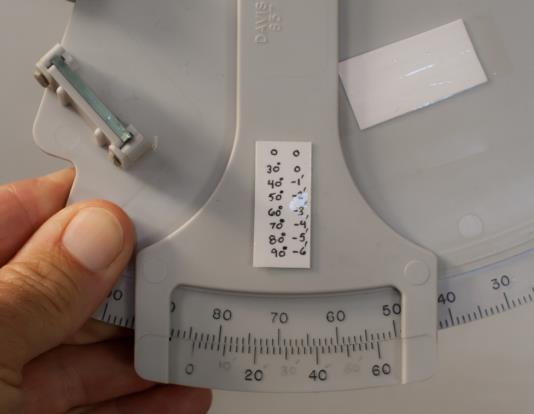
NavList:
A Community Devoted to the Preservation and Practice of Celestial Navigation and Other Methods of Traditional Wayfinding
From: Greg Rudzinski
Date: 2017 Nov 17, 11:43 -0800
Peter,
I don't worry about the mirror's perpendicularity on plastic sextants. Especially the Davis Mk3 which is the most basic production sextant available. If I squeeze various parts of the Mk 3 then there is a perceptible change of angle seen in the horizon mirror. What I did with my Mk 3 was to make a rough arc correction table using a metal sextant as the standard. There are several postings on how to do this in the archives. Once done then arc error and other remaining systematic errors can be roughly corrected for. There really is no way to correct for all the short comings of a plastic sextant. Exposure to the Sun alone during the day is enough to move the index error 3' or 4'. The index arm vernier scale is not that precisely scaled either. The bottom line is that I'm happy with 4' intercepts from a GPS assumed position using an artificial horizon on land and 6' intercepts if at sea. A trick that I do to improve results is to always use the same part of the index arm vernier scale set to the even minute between 0 to 20'. This means waiting for the body to rise or set to the desired Hs preset.
Greg Rudzinski
From: Peter Monta
Date: 2017 Nov 14, 10:55 -0800PeterCheers,- verify that side error is still zero- swap the cylinders on the arc, take another photo- place cylinders as shown; put camera in the plane of all three upper marks; take photo- take out any side error by adjusting the index mirror, thus aligning it to the fixed horizon mirrorIt looks like my Mark 3 horizon mirror is out by about 12 arcminutes. Not horrible, but could be better. Pictures attached.Procedure:- find the vertical distance in pixels between direct-view and reflected marks; average them across the two photos; scale to angular units for final resultThe two line segments are spaced by 2 mm, which subtends 43 arcminutes from the edge of the index mirror when placed on the arc 160 mm away. The PDF of the stickers is attached, to be printed on full-sheet adhesive label paper. The reason the two readings are averaged is that one is unlikely to be perfect in putting the stickers on the cylinders or cubes or whatever.







